In this post, you’ll learn what is soldering and how it is done. Types of soldering and soldering tools, their application, safety precautions, and more.
What is a Soldering?
Soldering is the process of joining two pieces of metal sheets by the addition of filler metal with a melting temperature below 450°C. The soldering materials used in the soldering process called solder which is made up of the alloy of tin and lead.
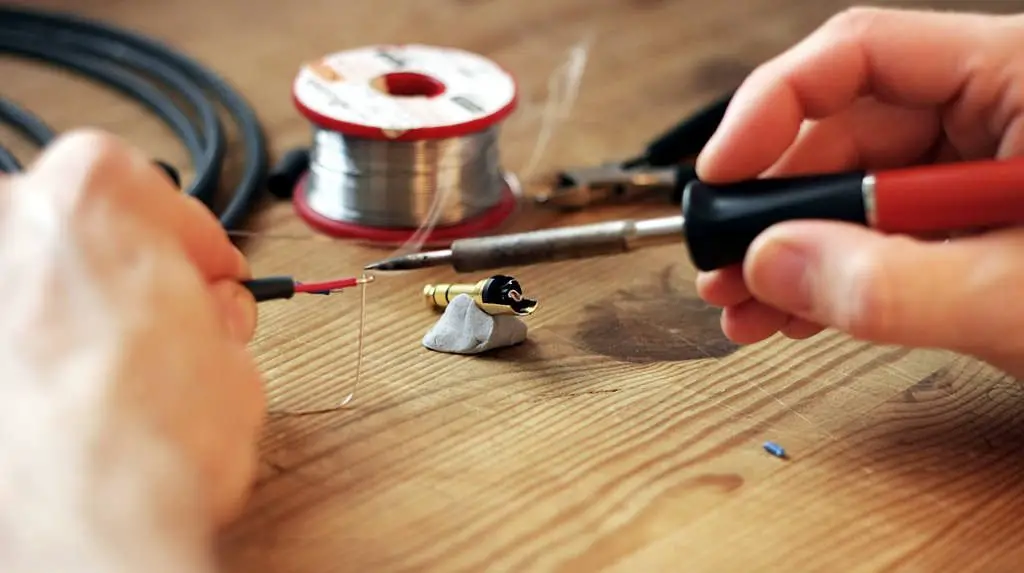
The flux material that is also used in the soldering process is made up of os zinc chloride and ammonium chloride. The function of flux is not to permit the molten solder to wet and flow into the joint. Generally, lead and tin alloy are used in various compositions depending upon the use of the joint.
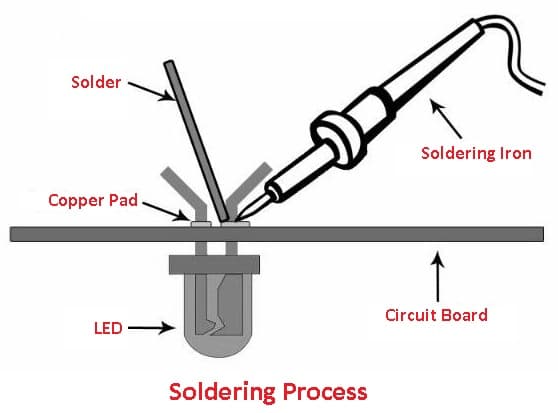
The strength of the soldering joint depends upon the strength of the alloys and their adhesive qualities. After soldering, the residues of flux should be removed by washing thoroughly with water to avoid corrosion.
The strength of the soldering joint is relatively low. Soldering is commonly used in electric and electronic applications, Sheet metal work wire terminals, sealing of metal containers, and similar small parts.
You might like: What is the Difference Between TIG & MIG Welding?
Types of Soldering
Following are the types of soldering:
- Soft soldering
- Hard or Silver soldering
- Brazing
#1 Soft Soldering (90 °C – 450 °C)
It is used in sheet-metal work for joining parts that are not exposed to high temperatures and are not subjected to extreme loads and forces. Soft soldering is also used for joining wires and small components.
The solder, which is mostly composed of lead and tin, has a melting range of 150 to 350°C. A suitable flux is always used in soft soldering.
Its function is to prevent oxidation of the surfaces to be soldered or to dissolve oxides that settled on the metal surfaces during the healing process. Although corrosive, Zinc chloride is the most common soldering flux.
The resin is non-corrosive, but it does not have the cleaning properties of zinc chloride. A blow torch or soldering iron is made, a device for heating base metals and melting solder and flux.
Soft soldering has the lowest filler metal melting point of all soldering types, which is less than about 400°C, these filler metals are typically alloys, often with liquid temperatures below 350°C.
Due to the low temperatures used in soft soldering, it thermally stresses components the least, but does not create strong joints and is therefore unsuitable for mechanical load-bearing applications.
#2 Hard or Silver Soldering (above 450 °C)
It employs solder which is metal at higher temperatures and is stronger than those used in soft soldering. Silver soldering is a hard soldering method, and silver mixed with tin is utilized as a solder.
The temperatures of the various hard solder vary from about 600 to 900°. The fluxes are mostly in paste form and are applied to the joint with a brush before heating. In hard soldering, a blowtorch constitutes the equipment.
The different compositions of solder for different purposes are as follows:
- Soft solder-lead 37%, tin 63%.
- Medium solder-lead 50%, tin%.
- Plumber’s solder-lead 70%, tin 30%.
- Electrician’s solder-lead 58%, tin 42%.
#3 Brazing (above 450 °C)
These types of soldering metal use a very higher melting point than the metals used in hard and soft soldering. However, it is similar to hard soldering, the metal being bonded is heated as opposed to melting.
Once both materials are sufficiently heated, you can then set the soldering metal between them which melts and acts as a bonding agent.
You might like: 5 Different Types of Welding Positions Explained
Soldering Tools
The following are the tools used in soldering:
- Soldering iron
- Soldering station
- Iron tips
- Brass or conventional sponge
- Soldering iron stand
- Solder
- Helping Hand
#1 Soldering Iron
A soldering iron is a hand tool used to heat solder, usually from an electrical power supply at high temperatures above the melting point of a metal alloy. It allows for the solder to flow between workpieces required for joining.
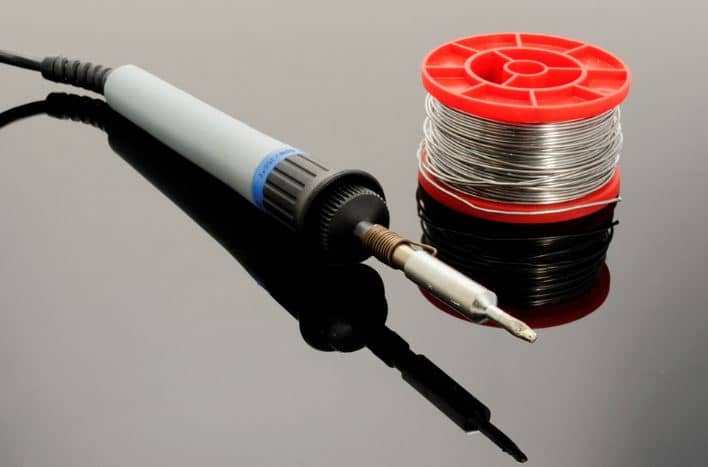
This soldering tool is made of an insulated handle and a heated pointed metal iron tip. Although soldering iron has engineering uses, it can be used in different connections.
#2 Soldering Station
If you are going to do a lot of soldering, this is great because they provide more flexibility and control. The main advantage of a soldering station is the ability to adjust the soldering iron temperature properly which is great.
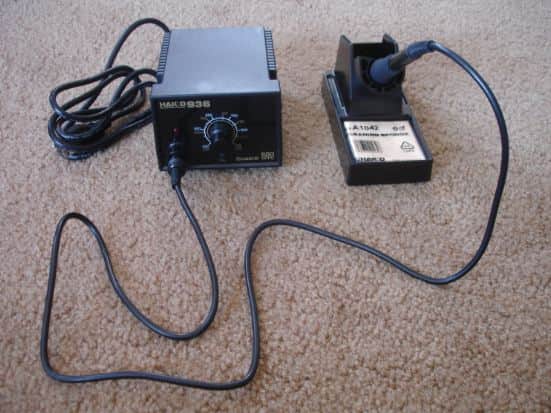
These stations can also create a safe workplace as some also include advanced temperature sensors, warning settings, and password protection for security.
#3 Soldering Iron Tip
Most soldering iron endings have an interchangeable part known as a soldering tip. This tip has many forms and they come in a variety of shapes and sizes. Each tip is used for a specific purpose and provides a distinct advantage over the other.
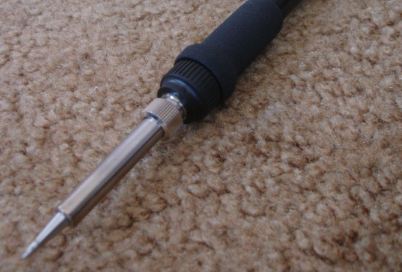
The most common tips you use in electronics projects are:
- Conical tip
- Chisel tip.
#4 Conventional Sponge
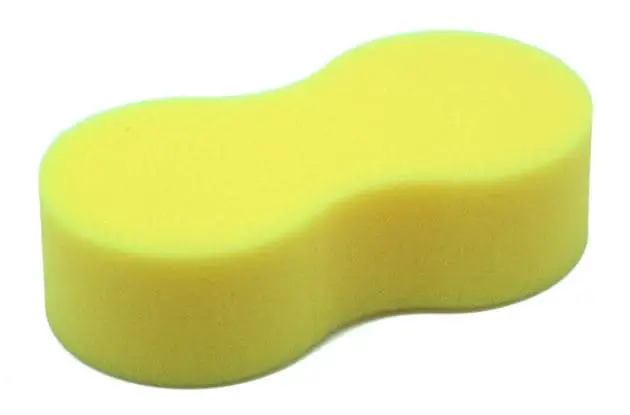
Solders use a sponge, which will help to clean the soldering iron tip which removes oxidation. With oxidation, the tips will turn black and will not accept solder as it was new. You can use a conventional wet sponge, but this shortens the tip’s lifetime due to increase and decrease.
In addition, the tip temperature will drop temporarily when the wet sponge is wiped. So it is better to use a brass sponge.
You might like: Different Types of Welding Rods & Their Uses [Explained]
5. Soldering Iron Stand
A soldering iron stand is very basic but very useful to use in soldering operations. This stand stops the hot iron tip from coming into contact with flammable materials or causing accidental injury to your hand.
6. Solder
Solder is a metal alloy material that is melted to form a permanent bond between electrical parts. Inside the core, there is a substance known as a flux that helps improve electrical contact and its mechanical strength.
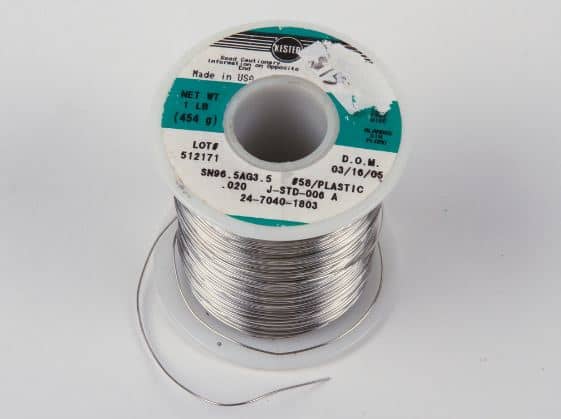
The most commonly used type is lead-free Rossin core solder for electronic soldering.
#7 Helping Hand
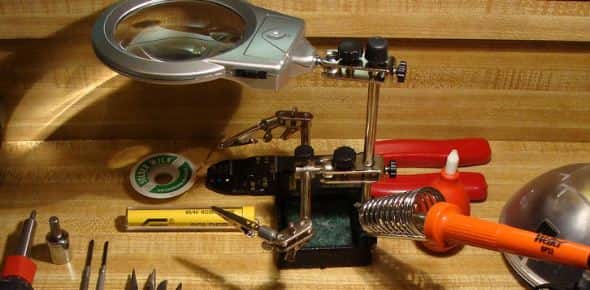
It is a device consisting of 2 or more clips and sometimes a magnifying glass/light is attached. The clips will help you to hold the things that you are trying to solder while using the soldering iron and solder. It is known as a very helpful tool in soldering operations.
You might like: How Does UnderWater Welding Works?
Safety in Soldering
The temperature of soldering irons can reach 800 F (Fahrenheit), so it is very important to know where your iron is at all times. When doing soldering, you use a soldering iron stand to prevent accidental damage.
When solder is heated, fumes are released which are very dangerous to your eyes and lungs. It recommends using a fume extractor, a fan with a charcoal filter that absorbs harmful solder fumes.
You must wear protective eyewear when doing soldering, to protect from an accidental splash of hot solder.
You might like: Understand Different Types of Welding Tools and Equipment
Advantages of Soldering
The following are the advantages of soldering:
- It is a simple and economical process.
- Since it has been done at relatively low temperatures, no metallurgical damage to the base metal.
- The soft solder joint can easily be dismantled by simple heating.
- Operator fatigue is less compared to the welding process. Soldering is divided into two classifications: soft and hard.
Disadvantages of Soldering
The following are the disadvantages of soldering:
- The process is limited to the minimum thickness(3mm).
- A skilled operator is required.
- The strength of the joint, when compared to welding, is lower.
Applications of Soldering
The following are the main applications of soldering:
- Soldering is used to join automobile radiator cores.
- Used to plumbing.
- Mainly useful in electronic industries like radio, TV, and computers.
- For joining wires and cables to lugs in electrical industries.
That’s it,
Thanks for reading. If you have any questions about “types of soldering” tell us in the comments. If you found this article interesting please share it with your friends.
Want free PDFs sitting at home? Then subscribe to our newsletter if you are new.
Download PDF file of this article:
You might like to read more in our article:
- Understand Different Types of Welding Machines & Their Uses
- Types of Welding Joints and Their Uses (Explained in Detail)
- What Are The Common Types of Welding Defects? [Causes, Remedies]
External Links:
Image Source: pixabay.com, Wikipedia.org.
I need the PDF is so helpful
The PDF file has been sent to your inbox.
Please send the pdf file
The PDF file has been sent to your inbox.
hi i found this article interesting please i need the pdf
I’m glad it was helpful for you. The PDF file has been sent to your inbox.